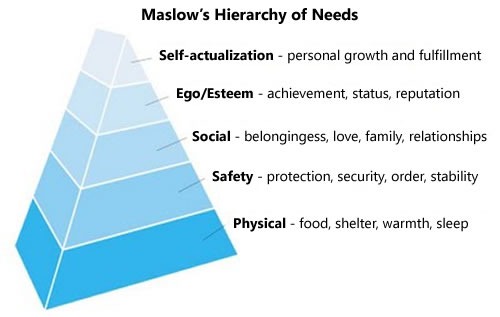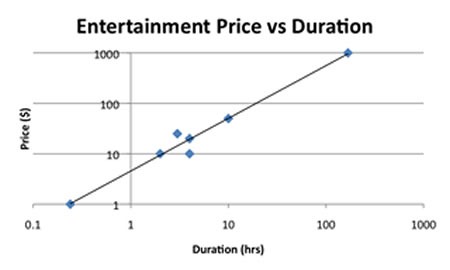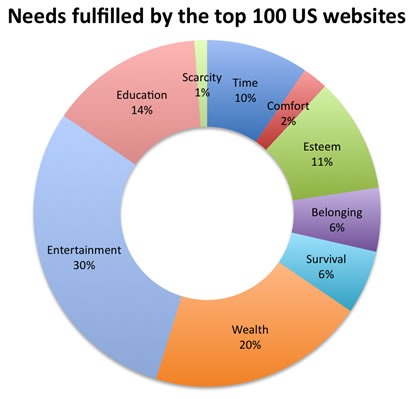If you’ve taken a psychology course or have leafed through a user experience book, you’ve probably come across a diagram of Maslow’s Hierarchy of Needs:

Dan Zambonini of the web development shop Box UK took some inspiration from it and wrote an article titled Web App Business Models: User Needs and What People Pay For. In it, he writes:
As customers, we have a finite number of needs that we’re willing to fulfill by parting with our hard-earned cash. If you’re planning a web application that can’t build a business model around one or more of these needs, you may face difficulties generating sustainable revenue.
He breaks down people’s needs into the following categories, with an explanation of each one:
- Time: Convenience, Efficiency, Immediacy
- Scarcity
- Comfort
- Esteem: Id, Desirability, Self-Image, Ego
- Belonging: Relationships, Sex, Affection
- Survival: Health, Safety, Wellbeing
- Financial Security: Wealth, Success, Career
- Entertainment: Emotion, Experiences
- Intellectual Stimulation: Creativity, Learning, Expression
He also looks at how much people are willing to have different needs fulfilled. For example, people are willing to pay geometrically increasing prices for increasing comfort. Consider the 15x price difference between “cattle class” and first-class tickets on an airplane (even though both depart and arrive at the same times), or the 27x price difference between a bargain-basement pillow and a down-filled one:

Entertainment, on the other hand, is a different beast. According to Zambonini, across the wide array of entertainment options from games for their mobile phones to vacations in the tropics, people are willing to pay the same rate: $5 an hour…

He categorized the top 100 U.S. sites by the needs he listed — here’s how they break down:

Naturally, such categorization is subjective and had to be drastically simplified, with each site being slotted into a single category. Sites about food were put into the “survival” category, even though a top 100 site on food would probably cover things like gourmet food and wine, which could arguably be put into the “entertainment”, “comfort” and even “esteem” categories.
He closes the article with a series of questions that you should ask about your application, such as “Does my app allow the user to do something more quickly?”, “Does my app allow the user to express their creativity?”, “Does my app provide entertainment for the user?” and so on. Your should be able to answer “yes” to at least one of these questions, and better still, you should be able to explain why.
Links
This article also appears in Canadian Developer Connection.
![intro slide[3] intro slide[3]](https://www.globalnerdy.com/wordpress/wp-content/uploads/2010/08/introslide3.jpg)



